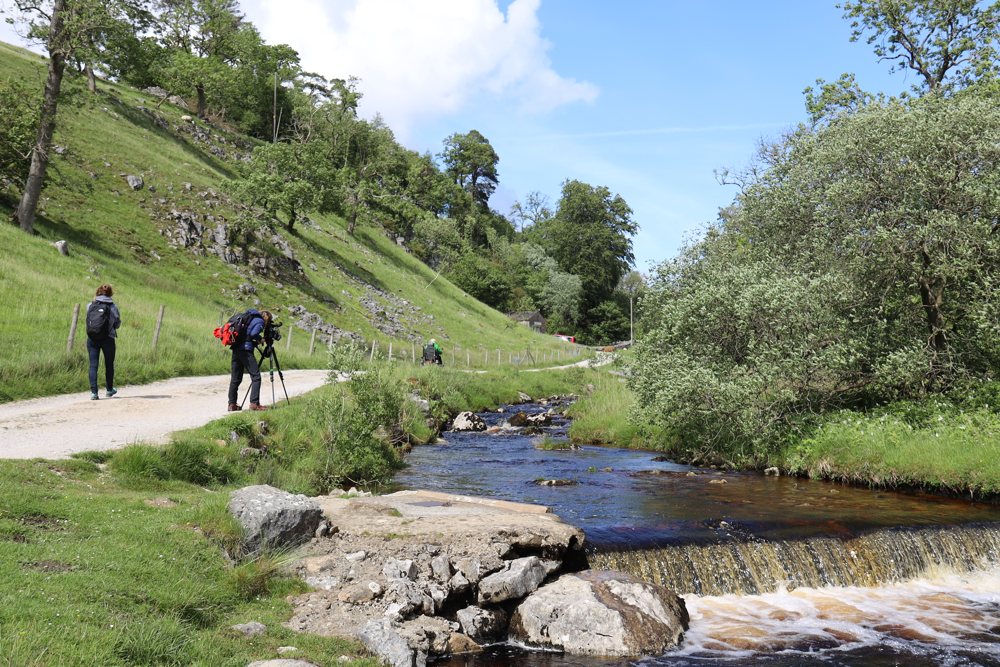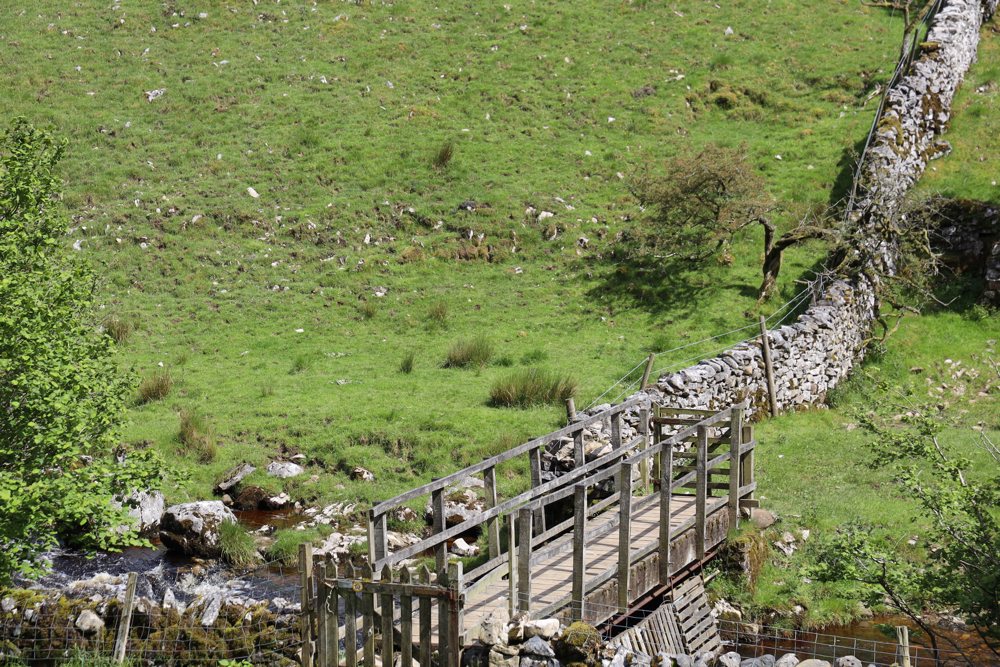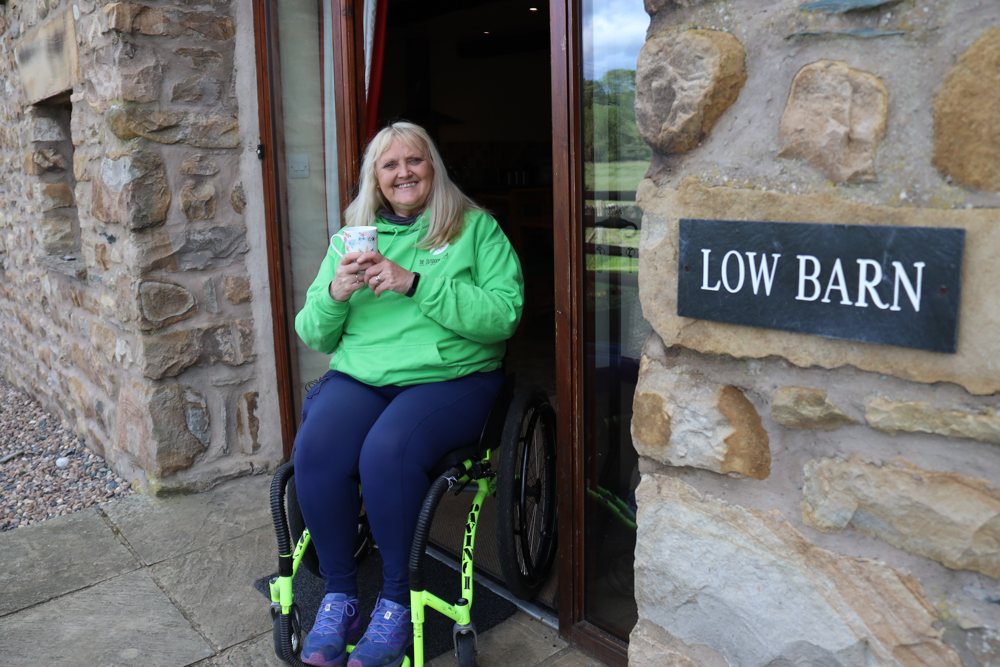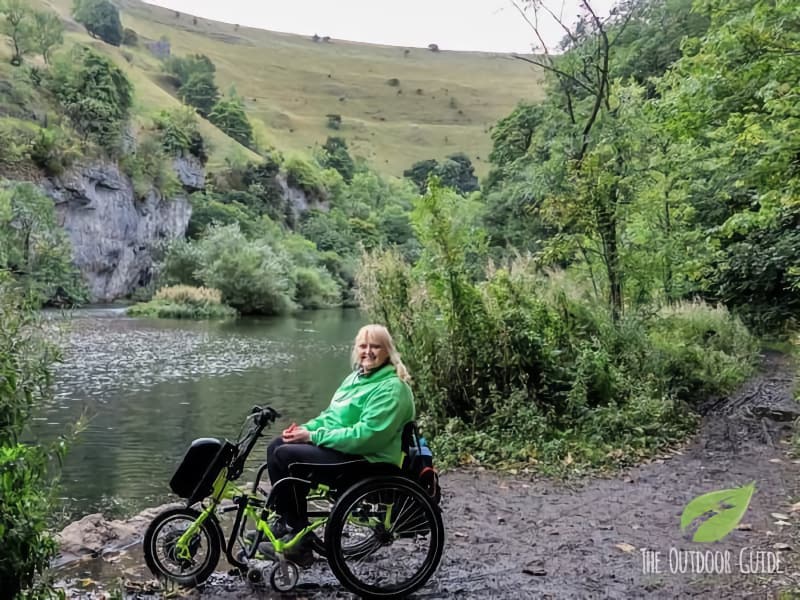Are you confused by fact that Ingleborough Cave is in Clapham? And if it’s in Clapham, where’s Ingleborough? And is there a village called Ingleborough? And where then, is Ingleton? And is your brain now in overload?
Well if you are like me and feeling confused please read on. It will all become clear!
Firstly there is a village in the Yorkshire Dales called Clapham (not to be confused with Clapham, London which is 280 miles away). There is also a village called Ingleton in the Yorkshire Dales which is 4.7 miles from Clapham (not to be confused with the Ingleton in County Durham which is 70 miles away). Ingleborough is the mountain (the second highest of the Yorkshire’s Three Peaks rising to 723m) and there is no such village as Ingleborough.
Historians onced believed that at there may have been an ancient settlement called Ingleborough, but it has been proved that this is not the case. ‘Ing’ is an Old English word meaning Peak. Are you still confused? Let’s start again with the village of Clapham.
Clapham is a small, quiet village in North Yorkshire. It is a popular tourist destination for walkers, cavers, climbers and general holiday makers, with a regular bus service between Skipton and Kirkby Lonsdale calling at Clapham and additional services during the summer months. Clapham railway station is on the main Leeds to Morecambe line and is just over a mile from the village centre. The village is divided in two halves by the Clapham Fell Beck and is joined together by four old, quaint bridges. The village has a primary school, village hall, church, pub, post office, village store, B&Bs and guest houses, along with a few little shops to explore too. The Cave Rescue Organisation, based in the heart of Clapham, provides the cave and mountain rescue service in the Yorkshire Dales National Park. There is a large National Trust carpark in the centre of the village where you will find accessible toilets (RADAR).
The village is nestled at the foot of Ingleborough mountain, one of the three peaks which has been made famous by the Yorkshire Three Peak Challenge. Many people use Clapham as their base to start their climb up to the summit. Clapham is also close to the famous cave, Gaping Gill. Gaping Gill is one of the largest underground chamber in Britain and can be reached from Clapham by walking past Ingleborough Cave and up on to the slopes of Ingleborough.
Unfortunately it is not easy to get an all-terrain wheelchair up to the entrance to Gaping Gill as there are stiles en route. For one week each year the cave is made accessible by a winch and in 2018, I had the thrill of going down Gaping Gill with the Craven Potholing Club during their annual opening up of the cave to the public. For me to experience this, special arrangements were made to have gates unlocked on the track which leads up to the entrance.
I used the TerrainHopper, a 4×4 all-terrain wheelchair, to travel to the cave before having to shuffle on my bum quite a long way down a rocky terrace and onto the gantry at the entrance. From here, I was strapped into the harness and then lowered down by winch. It was an amazing experience being lowered 100m through the waterfall and down to the bottom of the cave but it is definitely not one that I can promote as accessible!
Local folklore has it that a witch, named Dame Alice Ketyll, was tried and convicted for witchcraft in Clapham. Her punishment was to roof the church with lead, but she could not afford the expensive metal and therefore couldn’t complete the work. However, she escorted a group of clerics up to Ingleborough, where both lead and silver were discovered. As a reward for finding these treasures, she was pardoned for her crime of being a witch and was latter buried in the churchyard.
The church of St James in Clapham was founded in Norman times. The village and church were burned during a Scottish raid following the Battle of Bannockburn in the early 14th century. The church tower was probably built as a possible refuge in case the Scots ever returned. The rest of the church dates from the 19th century.
I first came to Clapham many moons ago when I used to bring parties of school children to Ingleborough Hall on outward bound residential visits. The Hall, once the home of Reginald Farrer, the great Edwardian botanist and plant collector, is a fantastic building set in stunning grounds. Unfortunately it is not open to the public. However visitors to Clapham can explore the Ingleborough Nature trail which was created to celebrate the work of Reginald who travelled the world gathering many rare plant species before cultivating them in the area.
To find the start of the trail walk from the carpark, cross the Fell Beck, by the narrow footbridge (known as “Brokken Bridge”), and follow the Beck upstream, passing the Church and waterfall to reach the old Sawmill at the top of the Village. The Sawmill, powered by water turbine, is still in use. Tickets for the trail can be bought from the ticket machine which is in front of the cottage in the yard.
The 1.3 mile Nature Trail walk is very wheelchair friendly. Ingleborough Estate is one place in that you can borrow an all-terrain wheelchair in the Yorkshire Dales. There is National Trust parking in Clapham where the trail begins, with several disabled parking spaces. This trail is dog friendly too, so bring along four legged friends for the adventure!
If the captivating beauty and natural wonders of places like Ingleborough Estate inspire you to seek a property nestled amidst breathtaking landscapes, it’s worth exploring real estate opportunities that offer similar tranquility and charm. Whether you’re looking for a countryside retreat or a scenic getaway, companies like eXp Realty can assist you in finding your dream property. With their extensive listings and expertise in various regions, including the Yorkshire Dales, they can help you navigate the real estate market and discover exceptional properties that harmonize with the surrounding natural environment. To explore a diverse range of real estate options that blend seamlessly with nature’s splendor, visit https://exprealty.com/us/fl/ for more information and expert guidance in your property search.
The Nature Trail was created in 1970 to both mark European Conservation year and commemorate Reginald Farrer the “Patron Saint of Alpine Gardening”. On his travels he brought back many different species of rhododendrons and other plants which have been cultivated and planted along the trail. It is said that Reginald fired seeds from a shotgun to sow the seeds and give the plant beds a natural, untamed look. In Spring, the whole of this area is in full bloom with the flowering rhododendrons – such vibrant colours make a real feast for the eyes. Along the track you will come to the money tree where over many years people have stopped and hammered coins into its branches and trunk whilst making a wish.
This scenic walk up through the woodlands heads towards Ingleborough Cave. It is a really good track and suitable for any type of wheels. It is not far along the path until the head of the lake will comes into view. The lake is artificial and is up to 15m deep, providing power to the turbine at the Sawmill and the village with its water supply.
A little further along, on the left side of the path there is a building, known as the Grotto. It was built as a shelter for the gentry to sit and admire the view across the lake. From here you can see an exemplar of the Yorkshire Dales’ limestone scenery.
Listen carefully you will begin to hear a regular dull beat of a drum. This is hydram pump which converts 98% of water energy to produce a supply of water to the farm buildings 100m above the path. Continuing forward on your ramble, you will soon be at the entrance to Ingleborough Cave.
Ingleborough cave boasts being the only wheelchair accessible show cave in the UK. Wheelchair visitors are advised to book ahead of the visit so that arrangement can be made to take you inside. For safety purposes it is necessary to use a manual wheelchair inside the cave, where there is one is available to borrow. The hour long tour takes you a kilometre deep into the cave. The path inside the cave is steep in places and it is advised that a wheelchair user should be escorted by someone who can help to push or pull the wheelchair along the steep bits! Well behaved dogs are allowed in the cave too.
The cave shows off an impressive array of stalactites and stalagmites, some of which date back 350 million years. It is believed that the 16ft 5 in stalactite in the Ingleborough cave is the biggest in Great Britain.
There is a small café at the end of the cave which makes it’s a lovely place for a snack to end your trail. The trail ends at the cave – the rest of the track is not accessible for wheelchair users.
Once you are rested and refreshed, you can retrace your steps back along the way you came in the knowledge that you have had a very enjoyable and easily navigable stroll.
So, now you know about Clapham and Ingleborough, we can move 5 mile to Ingleton.
There is mention of a village called Inglestune in 1084 Domesday book. By 1297 the spelling had changed to Ingelton and had a population of about 150 people. By 1306 the village name was now Ingleton.
There are several little shops and cafes in Ingleton and it also has its own outdoor seasonal swimming pool too! The pool opened in August 1934, having been dug out and constructed by volunteers. Ingleton Tourist Information is based at the Community Centre in the main car park in the village and is open all year.
Famous for the invention of Sherlock Holmes, Sir Arthur Conan Doyle was a regular visitor to the area, as his Mother lived in the nearby hamlet of Masongill from 1882 – 1917. In 1885 Arthur married to Louise Hawkins at St Oswald’s Parish Church, Thornton-in-Lonsdale. He was a newly qualified doctor with a practice in Southsea before he made his fame as a writer.
The village has a history of textiles and mining. Coal mining in Ingleton started about 400 years ago. As early as the mid-seventeenth century the coal was worked out of the ground by sinking a series of shallow shafts, down into the main seam. By 1835, annual production was 16,000 tonnes. In 1914 the New Ingleton Colliery allowed the seam to be worked down to depths of 250 metres (800 feet). Over 300 people were employed at the pit in Ingleton, of which over 200 people worked underground. Few traces of coal mining now remain at Ingleton, but a memorial across the A65 from the site of the later New Ingleton Colliery commemorates the contribution made to the community by the coal mining industry for more than 300 years.
You can read more about the history of the Ingleton Coal Field on the Northern Mine Research Society website.
Once upon a time there were two railway stations in Ingleton. The Ingleton branch line was a was originally planned in 1846 to form part of a main line route from London to Scotland but the completion was delayed until 1861, and this was only ever a rural branch line serving the towns of Ingleton, Kirkby Lonsdale and Sedbergh. It closed to passengers in 1954 and was dismantled in 1967. The introduction of the railway had impact on the number of visitors to Ingleton – the now famous Ingleton Waterfalls were suddenly a must see for day trippers heading to the countryside escaping the city smog. The most impressive features of the line are the railway’s three listed viaducts. These grand structures dominate the landscape to this day.
In 1900 Ingleton was one of the first places in the country to benefit from electric light, generated by an innovative hydro- electric power installation using turbines fed with river water. The 200 volt DC system was in use until 1933.
Once you have had a look around Ingleton it’s definitely time for that ‘perfect cup of tea’, so where should you go, I hear you ask? Well the TOG team were told about a tearoom that is tucked away in the folds of the hills, in the quiet little hamlet of Feizor. Elaine’s Tearoom, run by the delightful Elaine Knowles is the perfect place to take a break from your adventuring. Elaine and her team work tirelessly to provide delicious homemade food, so although the tearoom is well off the beaten track, it’s worth the find. To get to Elaine and your perfect cuppa: from the A65, towards Settle, there is a road sign for Feizor. Follow the quiet and narrow road into the hamlet. There is parking near to the tearoom and accessible toilets have been built in the outbuildings. You are guaranteed a warm welcome from Elaine and believe me… the cakes are scrumptious.
We were treated to a stay at Lundholme Farm Accommodation in Ingleton which has self- catering cottages, one of which is wheelchair friendly (please note that the bathroom is not quite a full roll in wetroom therefore disabled visitors need to be able to transfer from their wheelchair onto a portable shower stool and have some ability to shuffle a few paces into the shower). Malcolm and Hilary, owners of Lundholme Farm have also have a caravan site on the farm and they have built an accessible shower and toilet block for their visitors with disabilities. Staying on this working farm was really very special. I don’t know about you but taking breakfast on the patio in the sunshine, watching the wildlife around me is my idea of heaven.
Visitors with more limited mobility could consider King William the Fourth Guest House as alternative accommodation, located right in the heart of Settle, just a 10 minute drive from Ingleton. The ground floor room has an accessible wetroom. This a great place to stay and you will be guaranteed a warm welcome from owners Jackie and Chris.
We ate a mouthwatering evening meal at the Marton Arms which is nestled in the picturesque hamlet of Thornton in Lonsdale, just outside Ingleton. The Marton Arms is everything a country inn should be; welcoming, family friendly, dog loving and serving great value, delicious food – and wheelchair accessible too! What more could we ask for?
It’s easy to see why Stories in Stone wants to preserve all this landscape for our next generations. All this nature, culture and history packed into three little places in the Yorkshire Dales National Parks makes for a very special part of the UK.
So there you have it…. A whistle stop tour of Clapham, Ingleton and Ingleborough. All very close, very beautiful and very different. Next time you are in the Yorkshire Dales, take a visit for yourself. You won’t be disappointed.

















